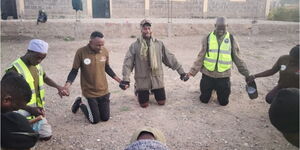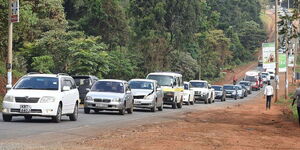Kaptebeswet Secondary School in Kericho has become the latest institution to shut its doors following a wave of student unrest sweeping the country.
The closure, which took effect after a Friday morning rampage, has left the school deserted, its future uncertain. Students reportedly launched the strike in protest of the sudden transfer of their deputy principal, a move that angered them enough to stage a violent demonstration.
With no casualties reported, the administration made the decision to suspend all school activities indefinitely, citing safety concerns.
The unrest at Kaptebeswet comes on the heels of a troubling pattern—schools across the country have been closing down due to escalating violence among students. This third term has been marked by a worrying surge of protests, fires, and property damage.
The case of Kaptebeswet Secondary echoes a broader crisis. Dagoretti High School recently shut down after a fight broke out during a basketball match, leaving 11 students injured. The altercation led to a night of chaos as students vandalised school property. Several were hospitalised, prompting authorities to deploy additional security forces to contain the situation. The indefinite closure followed swiftly.
St Monica Girls High School in Kitale is another casualty in this string of unrest. Students there went on a rampage, demanding the removal of their principal, whom they accused of mismanagement. Property destruction, including the school gate, followed their protests. The school has remained closed since September, with no clear indication of when it will reopen.
Meanwhile, Eastleigh High School in Nairobi faced its own bout of disorder when students staged protests over the administration’s refusal to allocate space for a mosque. The situation escalated quickly, with students accusing their principal of making inflammatory comments that further fuelled tensions. Police were called in to quell the unrest, using tear gas to disperse the demonstrators.
This violent turn of events in schools raises pressing questions about the state of education in Kenya. The Ministry of Education, tasked with maintaining order, faces increasing scrutiny as the list of closed schools grows.
While Kaptebeswet and others are dealing with internal administrative disputes, the broader issue points to a systemic failure to manage student grievances effectively.
The root causes of these incidents seem to vary, but all point to a deeper problem within the school system. Whether it’s dissatisfaction with school leadership, religious conflicts, or competition between students, the violence shows no signs of abating.
With over 426 students now displaced from Kaptebeswet Secondary, the ripple effect on local communities and families will be significant.












